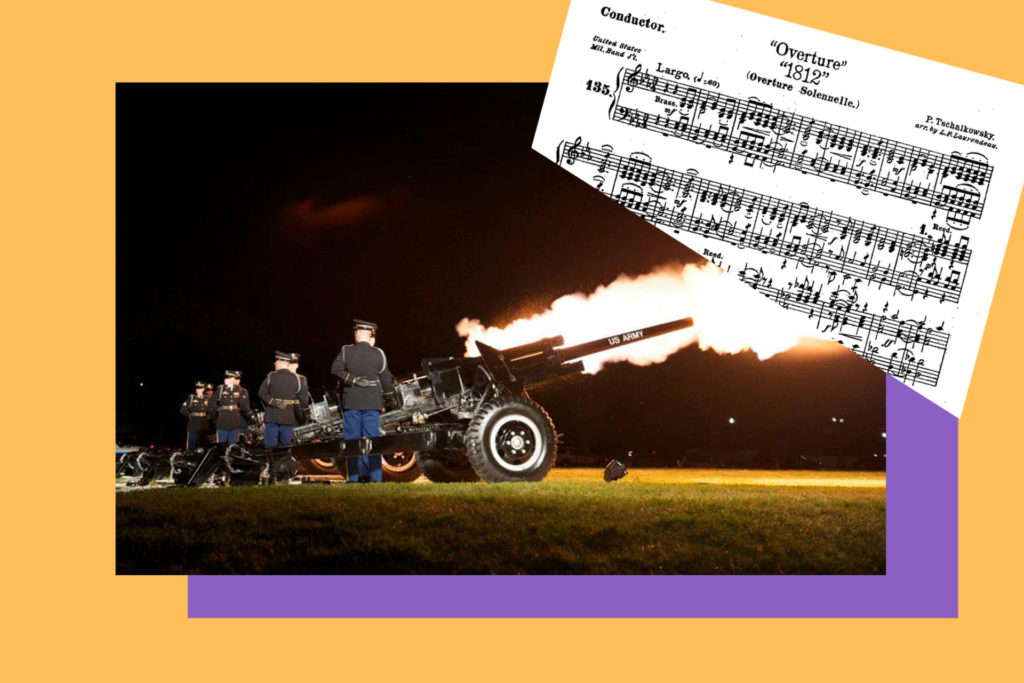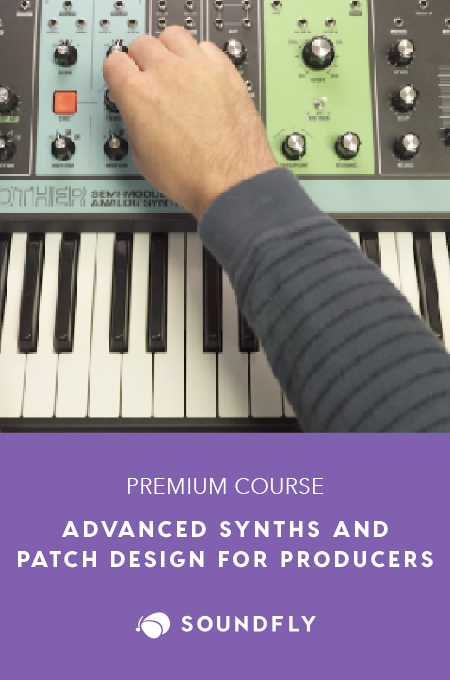+ Soundfly’s Intro to Scoring for Film & TV is a full-throttle plunge into the compositional practices and techniques used throughout the industry, and your guide for breaking into it. Preview for free today!
Violins, cellos, horns, and woodwinds. Brass, percussion, voice. All of these are commonplace, even somewhat expected, staple elements in music composition. But some composers, perhaps prompted by a strange muse, decide to incorporate unusual instruments that are not even instruments at all…
Do they work? Sometimes, surprisingly, they do! We’ve seen how films and television shows are able to incorporate unique sounds for visual world-building, but the following examples, whether successful or not (yet always interesting), are exclusive to music alone.
Here are five of my favorite “unusual” instrument additions to musical scores and applications.
Cannons
Let’s start here. More likely to shatter your eardrums than create a pleasant reverie, no less than Pyotr Ilyich Tchaikovsky himself wrote live ammunition cannons into his famous “1812 Overture.” Intended to commemorate the defeat of Napoleon by the Russians at Borodino — and be the “go-to” national theme to end all national themes — Tchaikovsky famously hated his work.
Despite the composer feeling it was “very loud and noisy and completely without artistic merit,” it has become one of the most famous short pieces of classical music of all time. Yet one unfortunate downside to Tchaikovsky using cannons in his work (aside from being incredibly loud and unwieldly) is the issue of timing; the time between lighting the fuse and the cannons going off created a time lag that didn’t always sync with the intended musical part. Between this complication and the obvious issues with procuring live cannons, most orchestras opt instead for a big drum to play the part, in some cases many paper bags. It’s just easier, and less dangerous.
Crickets, Cicadas, Whales, and Nightingales
Composer and philosopher David Rothenberg is well known for his musical collaborations – his partners just aren’t always human. Mostly, they’re insects. Rothenberg, an author, composer of more than thirty recordings, and a prominent professor, has had opportunities to play with the likes of Peter Gabriel and Suzanne Vega. But he is renowned for duetting with whale calls, bird song, the buzz of bugs, and more.
So what inspired his love of nature and passion for intertwining it with music? According to Rothenberg:
“I was born in a cicada year. Seventeen years later, when I was in high school, I do remember them. And 17 years after that, they were singing all around my house here. And then I started already scheming that, 17 years after that, then I would be playing music with them.”
Understandably, in nature, he hears something different than the rest of us do; rhythm sections, chords, and melodic lead lines. He weaves these into his own music, creating unique and unusual sounds that are worth a listen.

Cell Phones
It is a fact that music can be made anywhere — with or without instruments. You probably do it yourself, musician or not — you may find yourself tapping out a rhythm on your desk or clinking your glass and making a particular tone. In fact, many producers have been known to create Grammy-level songs using apps on their phones.
But one group of researchers and musicians are taking it a step farther and creating music where phones are the orchestra’s only instrument. Your first thought might go to ringtones, and that would be an obvious place to go, but these Stanford University based musicians are taking this idea in a whole new direction. Ge Wang, one of the directors of the orchestra, created an app called Dubbed Ocarina, which turns phones themselves into instruments. The app allows players to see and hear what other musicians have created and collaborate in real time.
The world’s first all mobile phone orchestra is a very cool concept and it may even be taking off. A Swedish university appears to have taken up interest and even recently performed a piece.
Silence
John Cage was a well-known modern composer, noted as an innovator for using sounds of all kinds. He has used duck calls, transistor radios, and even pianos prepared with objects on the strings in his work. One of his most famous works — and certainly one that sparked a significant amount of debate — is entitled 4’33”. It was written for any instrument, or any number of instruments, and consists of three movements. The performer (or performers) are to be completely silent for the duration of the piece. When it first premiered, critics and audiences were confused.
Was it a joke? Was Cage making fun of his audience, or displaying some sort of hoity toity, overly self-important attitude? Not at all. Cage was being serious, and what he was trying to show the audience is that there really is no such thing as silence. You might hear the wind in the trees. The hum of the air conditioner. Audience members shifting and coughing. Cage invited the audience to listen and be still in the moment. When you do, you’ll notice a million little things you’ve never noticed before, and it’s all musical.
+ Read more on Flypaper: “All (Human) Music Is Repetition — Let’s Talk About That.”
Helicopters
On the opposite end of the spectrum, composer Karlheinz Stockhausen decided to go as loud as possible — and just as strange. His “Helicopter String Quartet” calls for two violins, a viola and a cello, each performing from inside their own helicopter and mimicking the sound of the rotors. While up in the air, what they play is beamed back down to the audience.
While it is definitely unusual, the composer insisted he was following the muse. In fact, the idea for this piece came to him in a dream. He had been playing with space in music for some time, and wanted the sound to “go around the heads” of the listeners; helicopters are certainly one way to achieve that. Between the mechanical sounds of the helicopter, the strings, and the idea of each instrument on its own aerial vehicle, “Helicopter String Quartet” stands out as one of the most daring and unusual pieces ever created.
Anything can (at least theoretically) become music. City sounds can be sampled and looped into a pop song. Trash cans and dumpsters can be beaten in a rhythm, creating a familiar, immediately identifiable sound. Helicopters and cannons can add spice to your musical score, shocking and thrilling your audience (or deafening them).
These works and others help to elevate music and challenge the concept of what it is. Sometimes, it doesn’t need to be an instrument at all. It can even be silence itself.
Don’t stop here!
Continue learning with hundreds of lessons on songwriting, mixing, recording and production, composing, beat making, and more on Soundfly, with artist-led courses by Kimbra, Com Truise, Jlin, Kiefer, and the new Ryan Lott: Designing Sample-Based Instruments.




